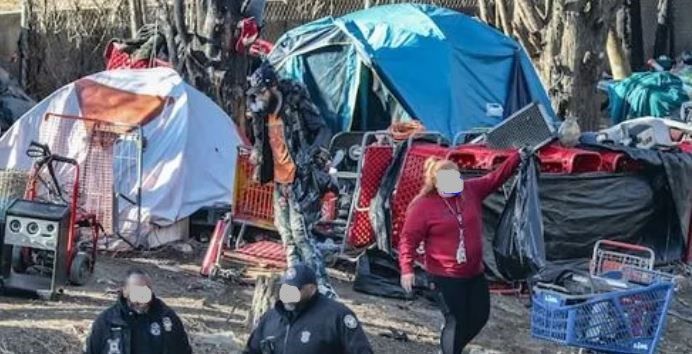GA Homeless Statistics
Recent statistics on homelessness in GA
Gwinnett County's population is almost 1M
Walton County's population is about 120k
Newton, Barrow, and Rockdale Counties are averaging about 100k each.
The overall GA homeless rate as of May 2025 is just above 11%
The above counties do not have the highest rates of homelessness in GA but in travelling through each county, the homeless individuals and families are visible near the Walmarts, grocery stores, and near the Food Banks and other services. Panhandling has greatly increased in these areas since 2020. At the time of this writing, Isayah 61 is seeing multiple posts all over local social media groups relaying the need for food and provisions as well as complaints about the growing number of issues due to homeless individuals behaving in adverse ways, likely just trying to survive or in some cases feeding an addiction.
In Loganville which is where IS61 is planning to open a ministry center, there is a growing population living behind most large stores and shopping centers along Route 78. A local minister picked up one such man named Ricky, from the Walmart in town to sit at the local food pantry for his evaluation. Pastor Gabriel (me) met them there to provide some extra supplies due to incoming weather. Ricky, who seemed like a healthy man in his mid 30s, was offered an opportunity to work but did not accept the offer. A few weeks later we reached out to him and his female companion who was wearing a makeshift cast on her arm, while they panhandled in a parking lot. We were able to pray for them and discovered why they were living outdoors and how the storm had caused her broken arm which was likely healed as we prayed. They accepted a Bible eagerly after also feeling some type of touch from God while we prayed. We continue to look for ways to minister to them and they've since added the cost of feeding a dog to their load. These are people who can physically work but are in need of some men and women who can stop by regularly to keep a compassionate eye on them and pray for them. Once Is61 is able to develop some of our outreach programs, we will be focusing on creating a purposeful outreach system which will seek to give Ricky and his companion a workable alternative, step by steps, into freedom.
Keep reading below for stats from another organization.
Homelessness in Georgia Statistics
Homelessness in Georgia continues to be a critical issue, with recent statistics highlighting both the scale of the problem and the challenges in addressing it. According to the 2024 Point-in-Time (PIT) count, Georgia has approximately 12,000 individuals experiencing homelessness on any given night (Georgia Department of Community Affairs, Georgia Department of Community Affairs). This count includes both sheltered and unsheltered individuals and provides a snapshot of the homeless population across the state.
Key Data and Trends
The data from recent years show some concerning trends. While the total number of homeless individuals in Georgia has fluctuated, certain patterns are emerging. For instance, there has been a noticeable increase in the number of people experiencing chronic homelessness — those who have been homeless for a year or longer or have had multiple episodes of homelessness (Georgia Department of Community Affairs). This rise is largely attributed to ongoing economic challenges, including the lack of affordable housing and the impact of inflation on household budgets.
Comparatively, Georgia’s homelessness rate is lower than the national average, but it still presents significant challenges. The state ranks in the middle range compared to others, with urban areas like Atlanta facing more severe issues than rural counties (WABE). Atlanta, being the most populous city in the state, has the highest concentration of homeless individuals, which skews the state-wide data. The 2024 PIT count revealed that over 3,200 people were homeless in Atlanta alone, accounting for more than a quarter of the state’s homeless population (WABE).
In addition to these numbers, it’s important to note the demographics of those experiencing homelessness. Veterans, individuals with disabilities, and young adults make up significant portions of this population, reflecting broader national trends. Additionally, the COVID-19 pandemic has exacerbated the situation, leading to an increase in first-time homelessness as economic instability has affected many families (WABE).
